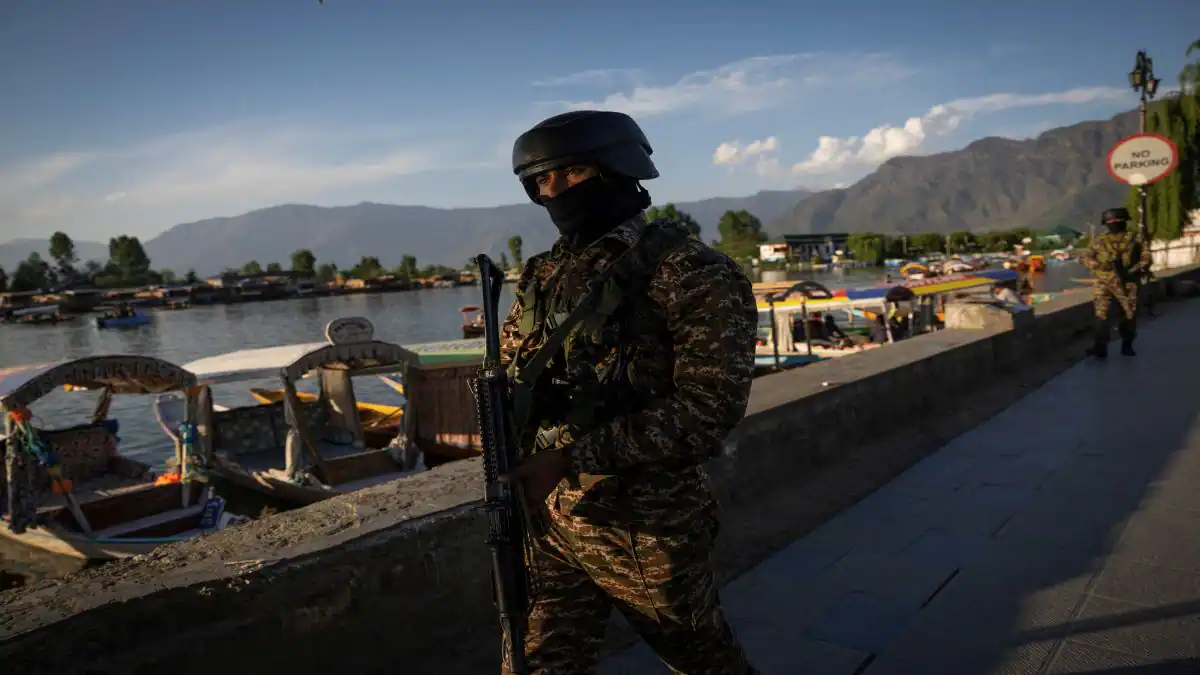For over seven decades, Kashmir has seethed at the fault line of Indo-Pakistani relations,– amid contested sovereignty and an unfinished search of national identity. Fed by grievance and continuous geopolitical tensions, the unresolved status of the region has fueled a relentless spiral of militancy. And the insurgent narratives found new oxygen with the dissolution of Article 370—which granted autonomous status to Jammu and Kashmir—, exacerbating the discontent among local populace.
On 22 April 2025, Kashmir’s Baisaran Meadow endured a tragic attack that claimed the lives of 26 civilians, including Hindu pilgrims, along with one Christian and a local Muslim. Survivors described a chilling pattern to the assault launched by the Resistance Front (TRF): the gunmen, clad in military garb, carried automatic rifles, separated men from women, and tested their faith before executing them. The attack bore the calculated contours of an irregular ambush,it catalyzed a cascading series of escalatory maneuvers and strategic countermoves by both India and Pakistan governments.
Selecting a soft civilian target at such a symbolic location guaranteed wide media attention, and subsequently, a fragile illusion of normalcy in Kashmir dissolved. The latest events struck the region on multiple pressure points, targeting communal harmony and depleting anticipated tourism revenue, while also disrupting diplomatic momentum toward regional de-escalation and ultimately altering the politico-strategic climate inside out. The attack epitomzes the complex overlap between ideologically-infused proxy warfare, regional militancy, and broader threats to South Asian security, blurring the conventional boundaries of state and non state actors in the process.
Contextualizing the Attack
Insurgency in Kashmir has long been defined as an intersection of identity, ideology, and interstate rivalry. Over the decades, violence has transformed from local “freedom fighting” into complex irregular warfare based on large-scale militant networks. Organizations such as Lashkar-e-Taiba (LeT), Jaish-e-Mohammed (JeM) and Hizbul Mujahideen (HM), which have a strong regional presence, are frequently accused of receiving external financial and tactical support from several regional and extra-regional states.
Following India’s move in August 2019 to abrogate Article 370, the militant landscape has undertaken a transformation. The Resistance Front (TRF) emerged as an ostensibly indigenous outfit, strategically named to conjure a secular veneer. To maintain a degree of ideological continuity–but without showcasing any direct alliance with any insurgent outlet– however, the TRF associates its cadre with entities like LeT and HM and follows their operational pattern. But more and more, TRF dominates the narrative of armed resistance in Kashmir.
By April 2025, many Indian intelligence reports surfaced, flagging a hike in militant movements. The precarious state of affairs reached its boiling point when New Delhi interpreted statements by Pakistan’s senior military leadership as a veiled green light to the militant actors. Consequently, tensions escalated rapidly: India suspended Indus Water Treaty, reduced Pakistani diplomatic staff, cancelled visas and closed Wahgah-Attari border. Not only that, India launched mass detention in Kashmir while pakistan faced a sweeping digital blackout, including major government social media channels.
On the other hand, in a swift and resolute response, Pakistan has vigorously condemned India’s aggressive pursuit of its Kashmir policy, particularly in the wake of the recent attack, further convoluting the optics. Pakistan offered to cooperate with a neutral probe, shut its arispace, threatened to suspend Simla Agreement and froze SAARC visas – except for Sikh community. Despite that Islamabad continues to forswear any direct involvement in the event, India continued to assert allegations of proxy manipulation.
Anatomy of an Ambush
Why target the Baisaran Valley? To be sure, the choice is telling, both tactically and symbolically. The meadow has become a densely crowded area, serving as the base camp of the Amarnath Yatra, a Hindu pilgrimage to the Amarnath Temple. In 2024, around 3.5 million tourists visited the region, and statistics claimed the rise of tourism in this region, which had been halted. The precision of attack reflected a form of religious screening with synchronized gunfire tactics. The attacker’s conduct and preparation for the operation, which included carrying M4 carbines, AK-47s, and horse-drawn packs, showed the rural-area infiltration executed through careful logistical planning.
What transpired was not random chaos but calculated ideological violence. By deliberately separating women and children, and only targeting men along sectarian lines, the militants unleashed faith-based violence that threatens ignite copycat attacks. Initially, TRF’s claim of responsibility reflected the ambush as an act of armed resistance. However, the group subsequently denied those pre-made claims, blaming their social media accounts were hacked by “Indian cybersecurity operatives.” This denial can be viewed as a strategic retreat from widespread public outrage. If militants need to retain local legitimacy and avoid any backlash to succeed, the April attack marks a critical error eroding their long-term objectives.
Indian Retaliation and Reinforcement
Beyond the local event, Indian counterterrorism machinery has retaliated with the joint deployment of personnel from the Central Reserve Police Force (CRPF), Indian Army, and Jammu & Kashmir Police forces, mounting sweeping search operations across the Baisaran region. The deployment of forces was followed by aerial surveillance, thermal imaging, and intelligence-led raids in which numerous arrests were made.
However, New Delhi’s response has reflected the burry line in Kashmir between non-state actors and civilians. After the attack, the Indian government carried out pre-dawn military strikes, ostensibly to destroy terrorists’ training camps and disrupt their local sanctuaries, but its operations also also damaged civilian residences. In an attempt to punish militants, India’s responses appear to have stoked their own resentment among the local community, complicating the political context and security environment even more.
India’s posture intensified as leaders vowed retribution. In the aftermath of India’s initial response, New Delhi redoubled tactical incursions across Srinagar and Jammu, targeting what authorities name Over-Ground Workers (OGWs). OGW is a term security forces use in reference to locals suspected of providing logistical support including intelligence sharing and rendering shelters while not directly engaging in armed conflict. Pertaining to this, Intelligence reports named prominent militant suspects such as Asif Fauji and Saifullah Kasuri. Simultaneously, the regional temperature rose when India temporarily suspended—or “abeyance” in New Delhi’s phrasing—critical agreements like the Indus Water Treaty (IWT) and imposed a ban on shipping imports. While ostensibly responses to the militant attack locally, these moves only further disrupted trade ties and raised the diplomatic temperature between Pakistan and India.
Nuclear Backdrop to a Long Shadow War
Kashmir has become a valley where militancy has repeatedly sparked infernos between two-nuclear arch rivals. These crises, although ostensibly regional in nature, can have global ramifications.
The 1999 Kargil war, while limited to the mountains of Kashmir, was fought under the shadows of nuclear crisis. That time Foreign Scretary Shamshad Ahmed forwarded nuclear signals as a response to India’s major military escalations. Far from an aberration, 2001 Indian Parliament Attack and 2008 Mumbai Attacks similarly prompted large scale mobilization of Indian as well as Pakistan military forces, leading to military face-off which barely stood short of kinetic retaliation.
The strategic calculus of South Asia turned particularly complex as kashmir insurgency is increasingly intertwined with military posturing and heightened political tensions on both fronts. Additionally, more recent conventional confrontations like in Uri in 2016 and Pulwama in 2019 dragged both nations dangerously close to nuclear escalation.
What emerges clearly that Kashmir has become a geopolitical tripwire – a misstep away from nuclear escalation.
The April 22 Pahalgam massacre stands a stark reminder of the region’s most persistent instability. Undeniably, the tragedy revealed the fragility of South Asian peace, demonstrating to the world how a local atrocity can threaten a broader confrontation. Militants, dressed up in ideological certainty and armed with operational stealth, pierced into civilian outskirts only to execute an asymmetric strike powered by plausible deniability and information manipulation—signifying an absolute act of irregular warfare. Here lesson is: irregular warfare thrives in ambiguity.
Syeda Fizzah Shuja
Syeda Fizzah Shuja is a Research Associate at Pakistan Navy War College and an MPhil scholar in Peace and Counter-Terrorism. Her research focuses on hybrid warfare and maritime security. She has previously been engaged in diplomatic and policy-oriented research with various foreign embassies in Pakistan.
- This author does not have any more posts.












